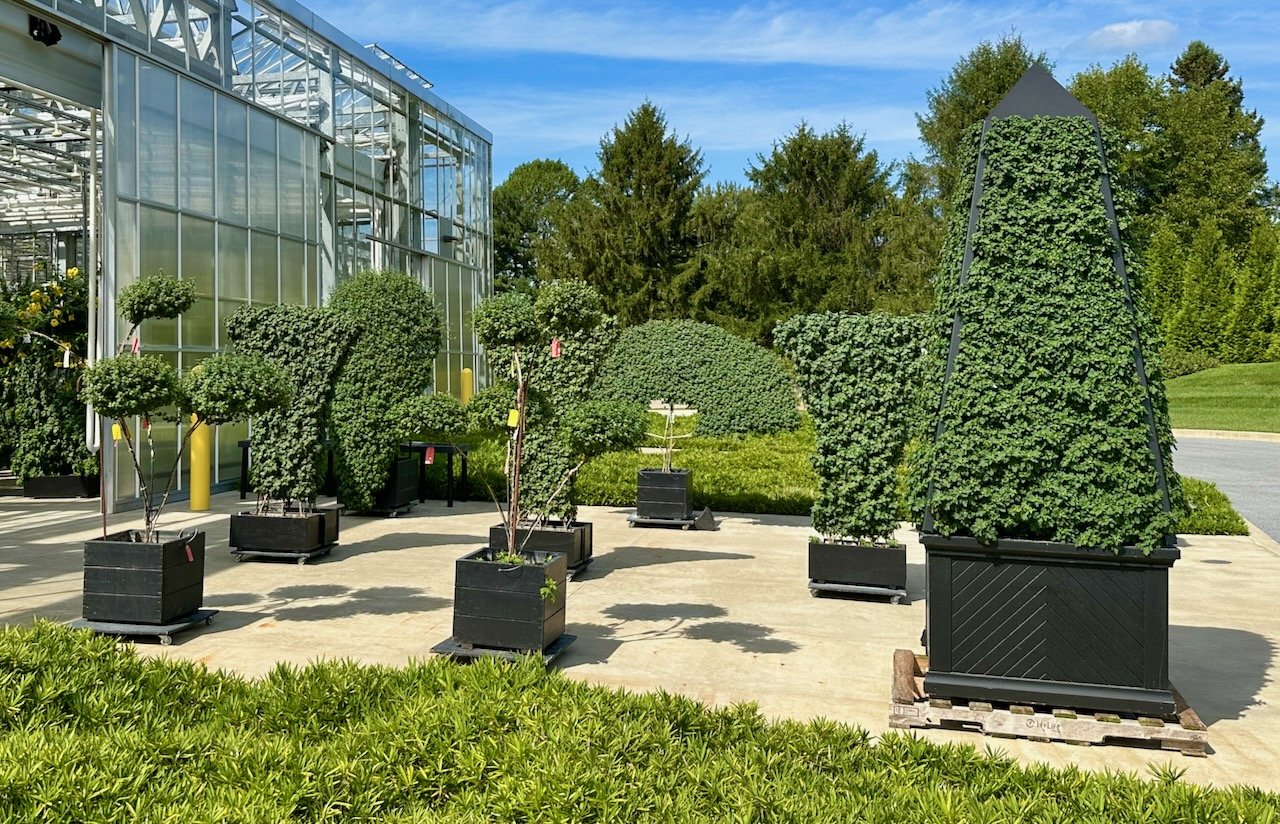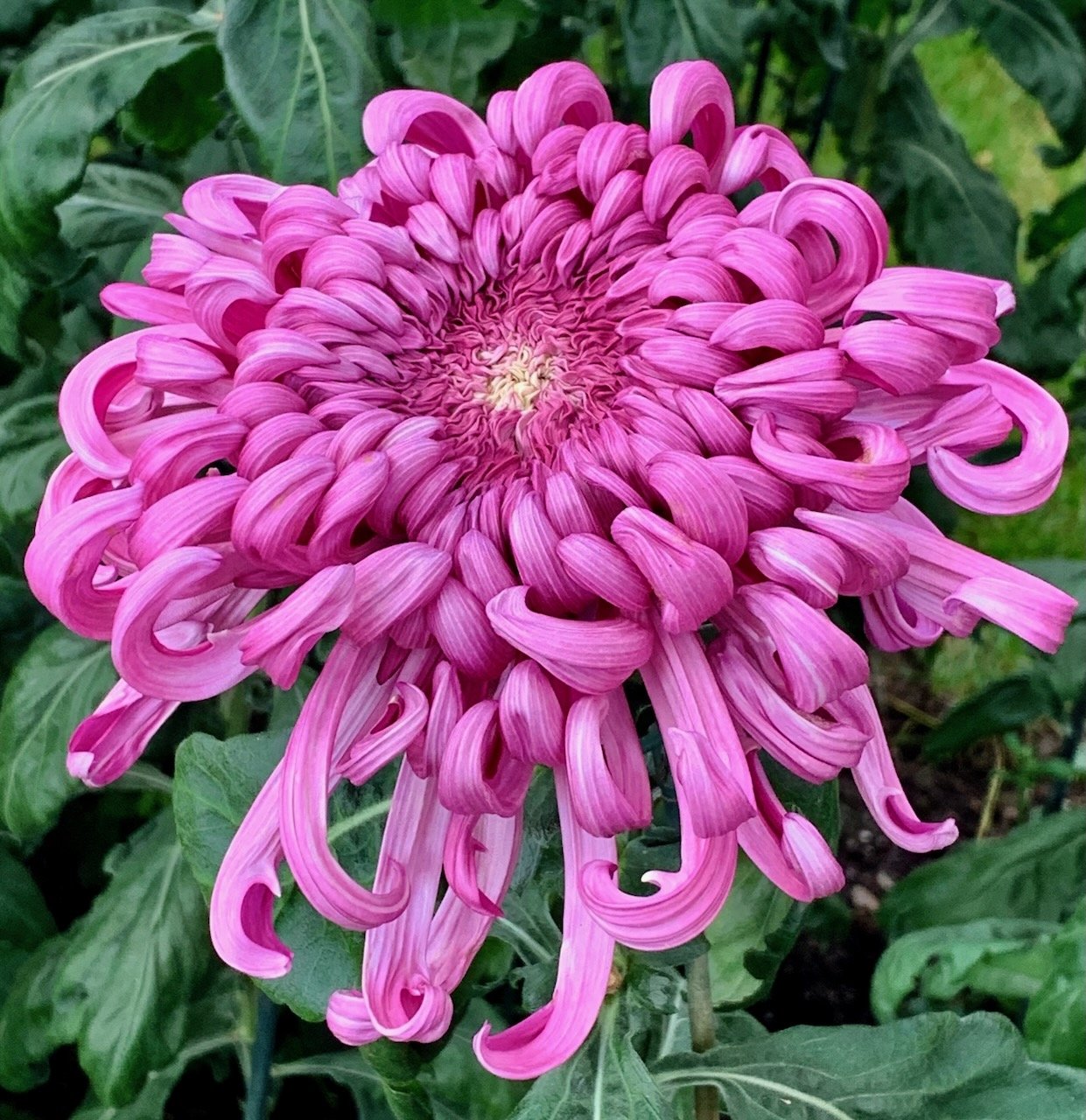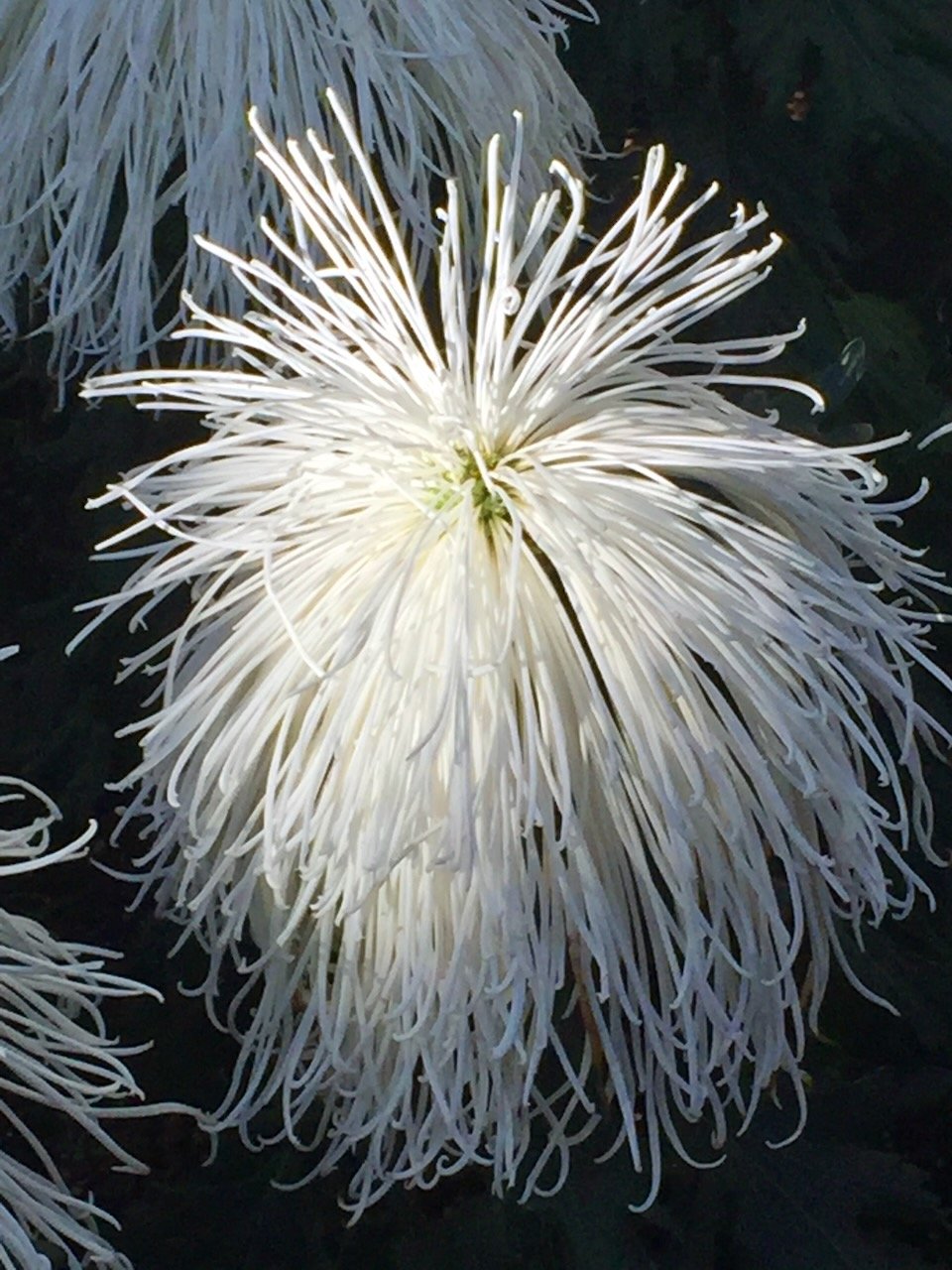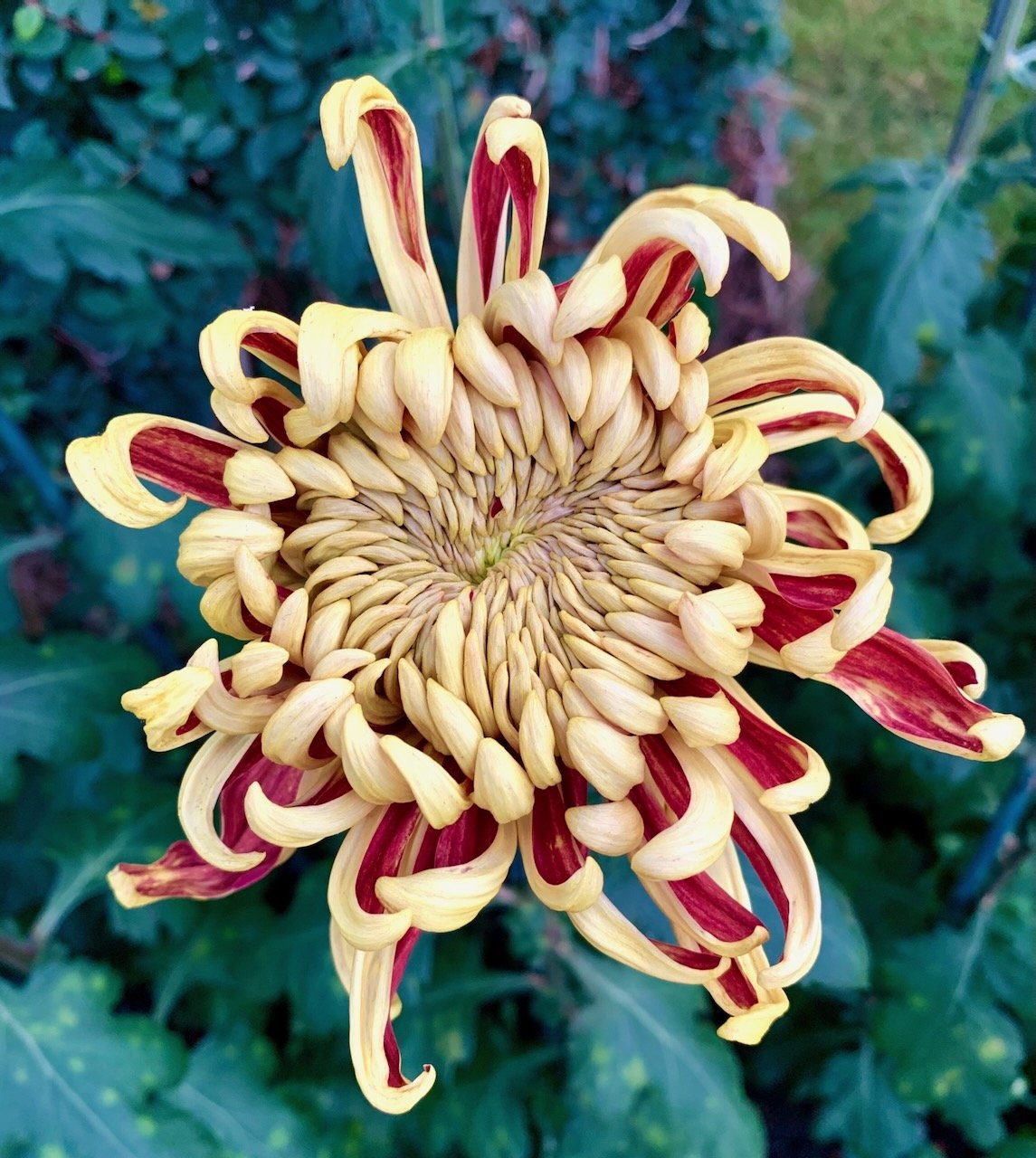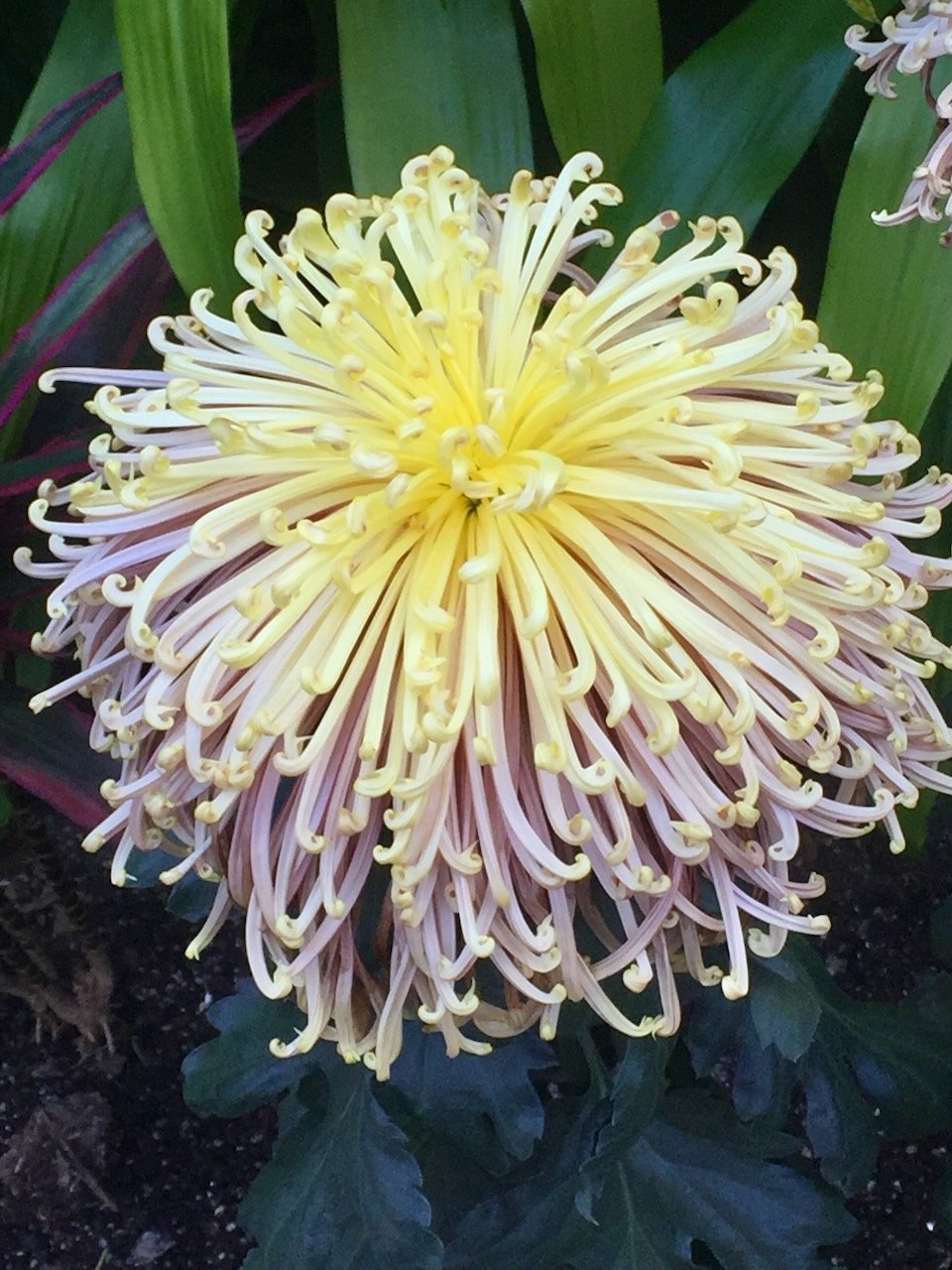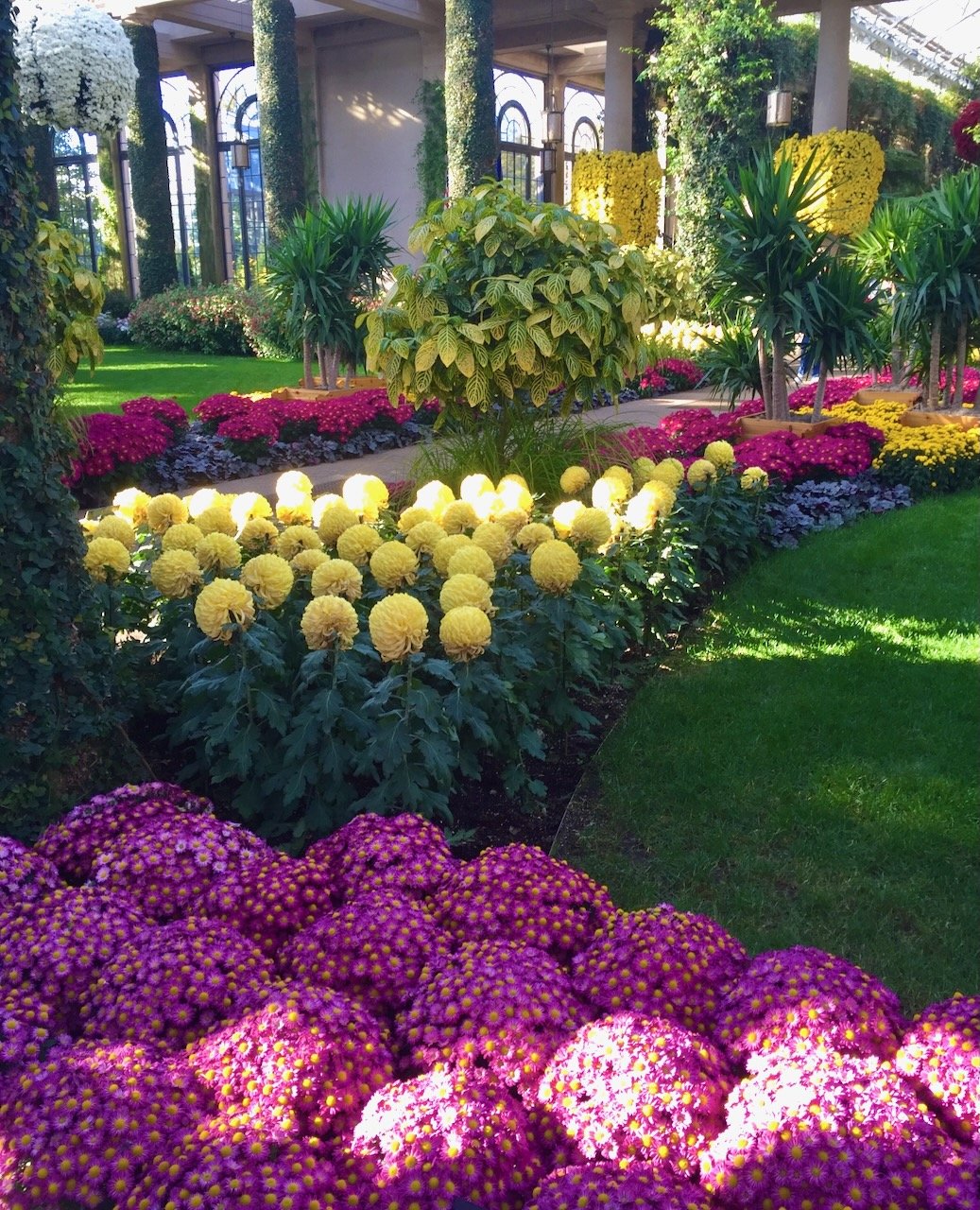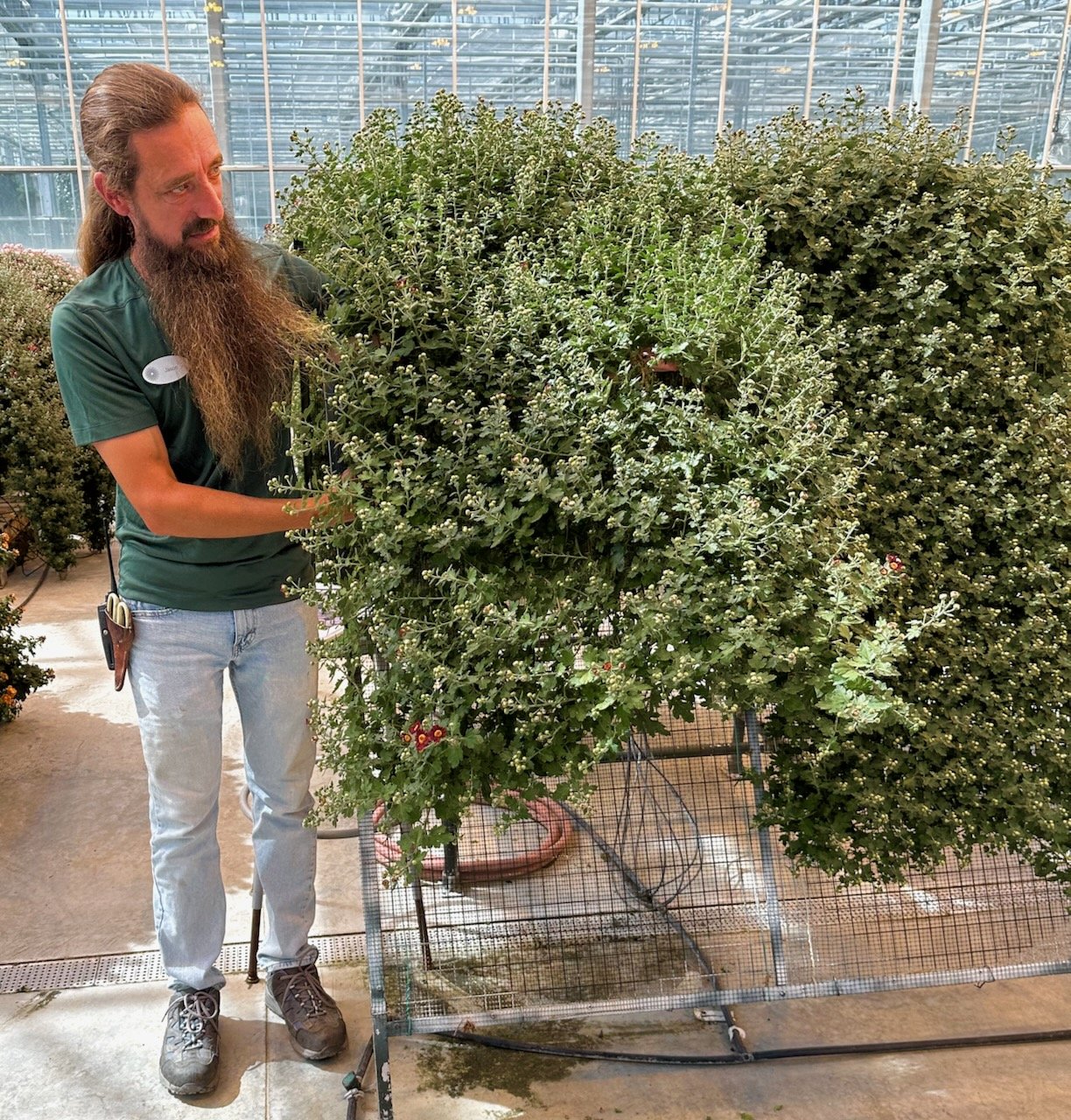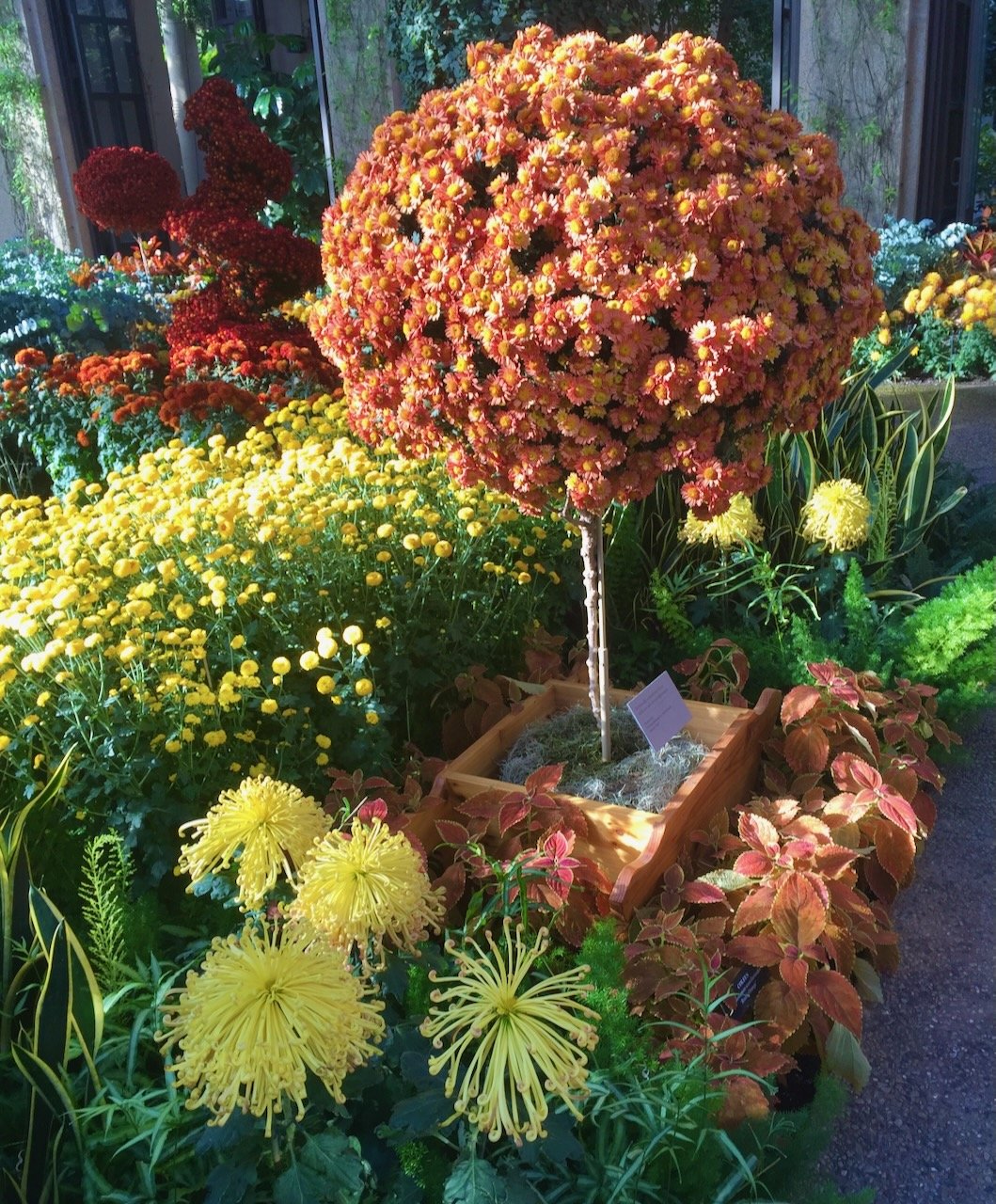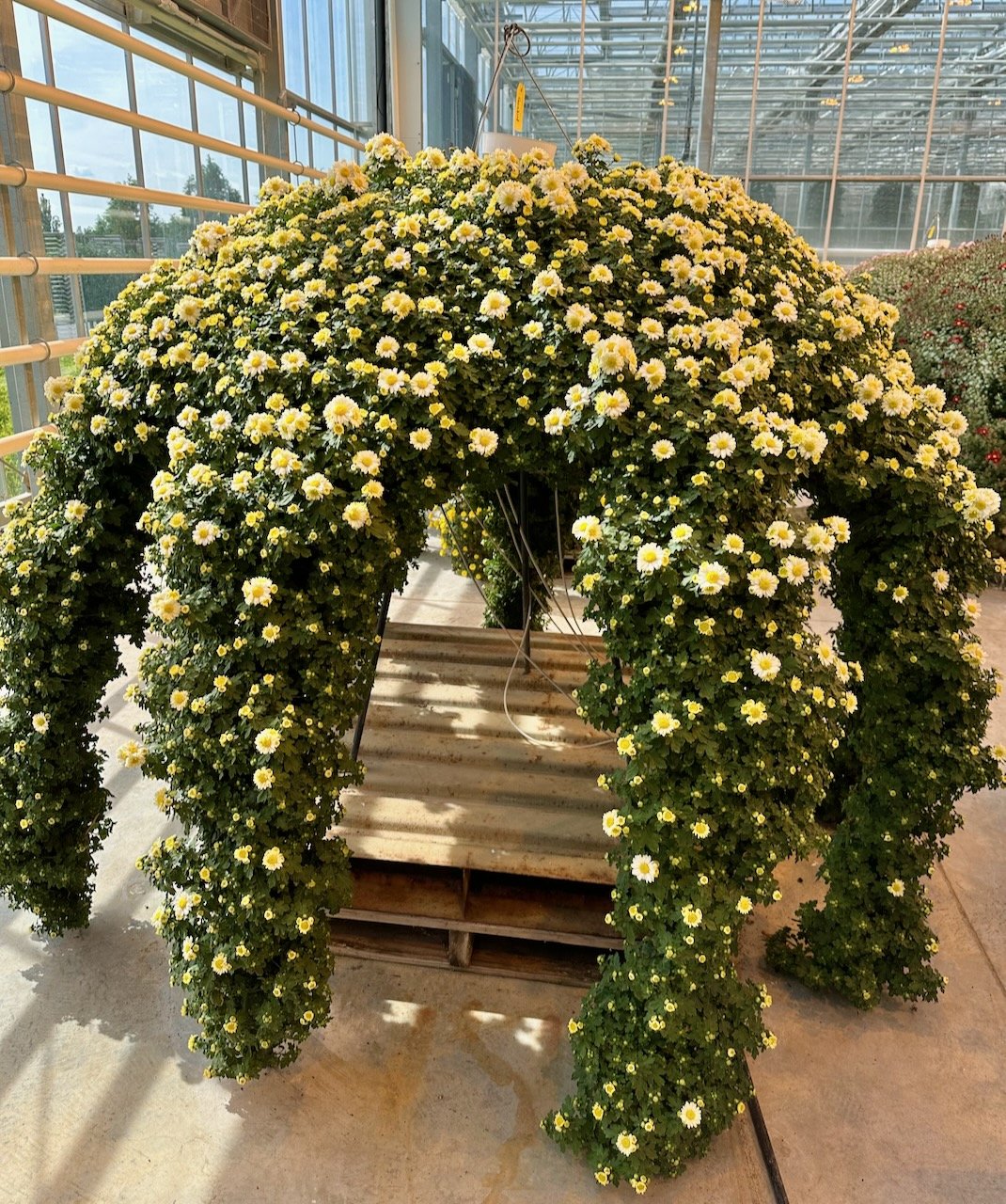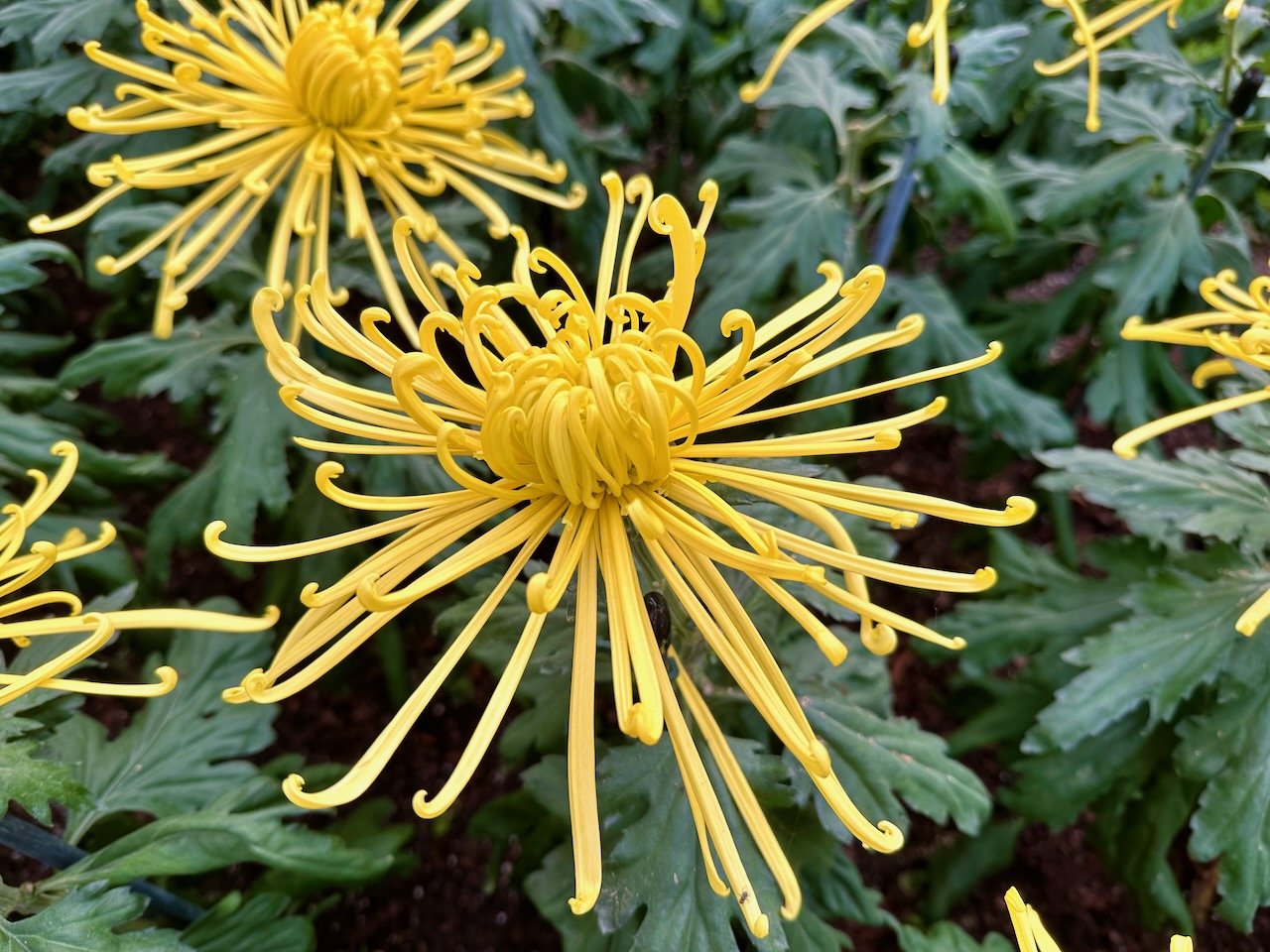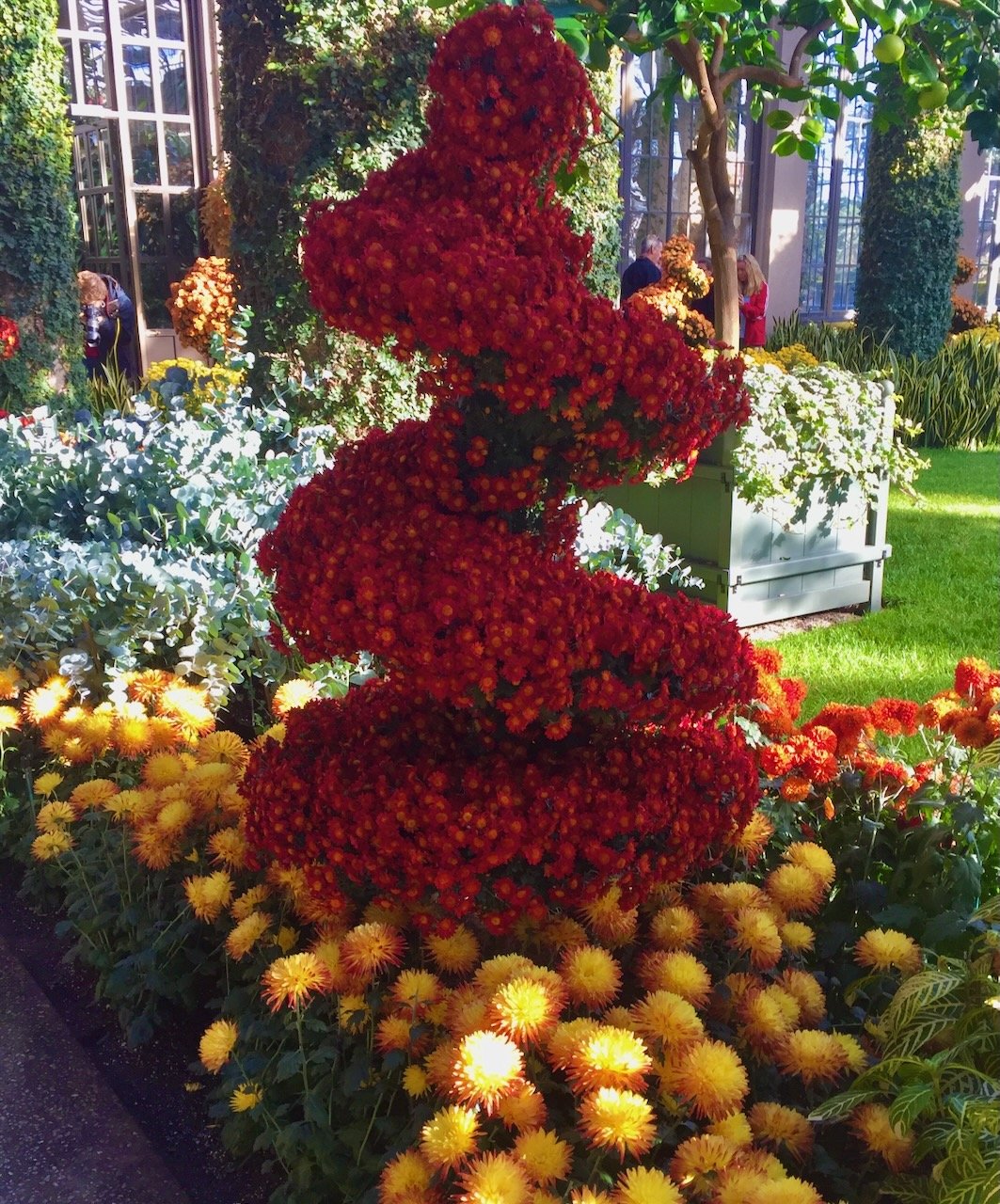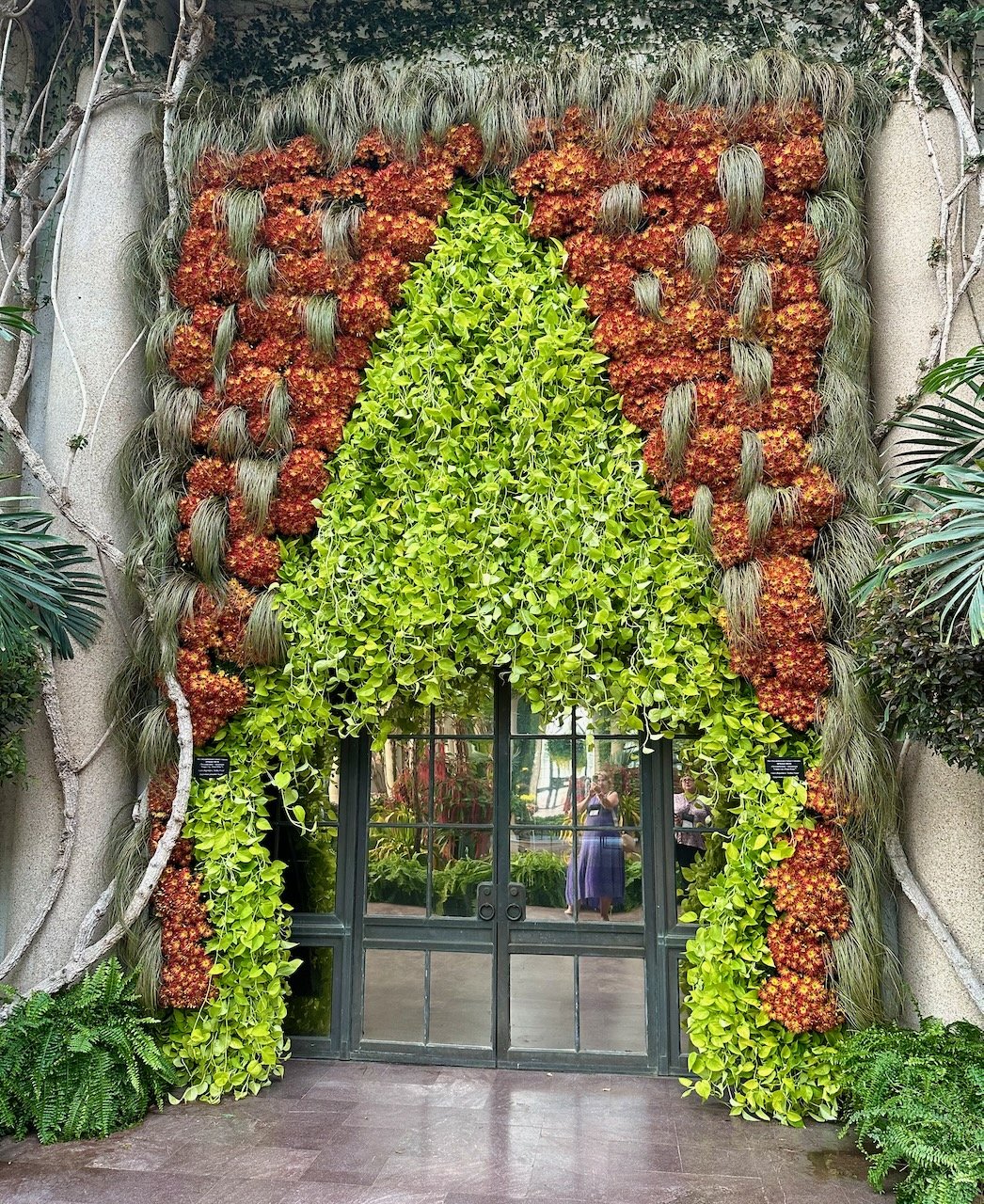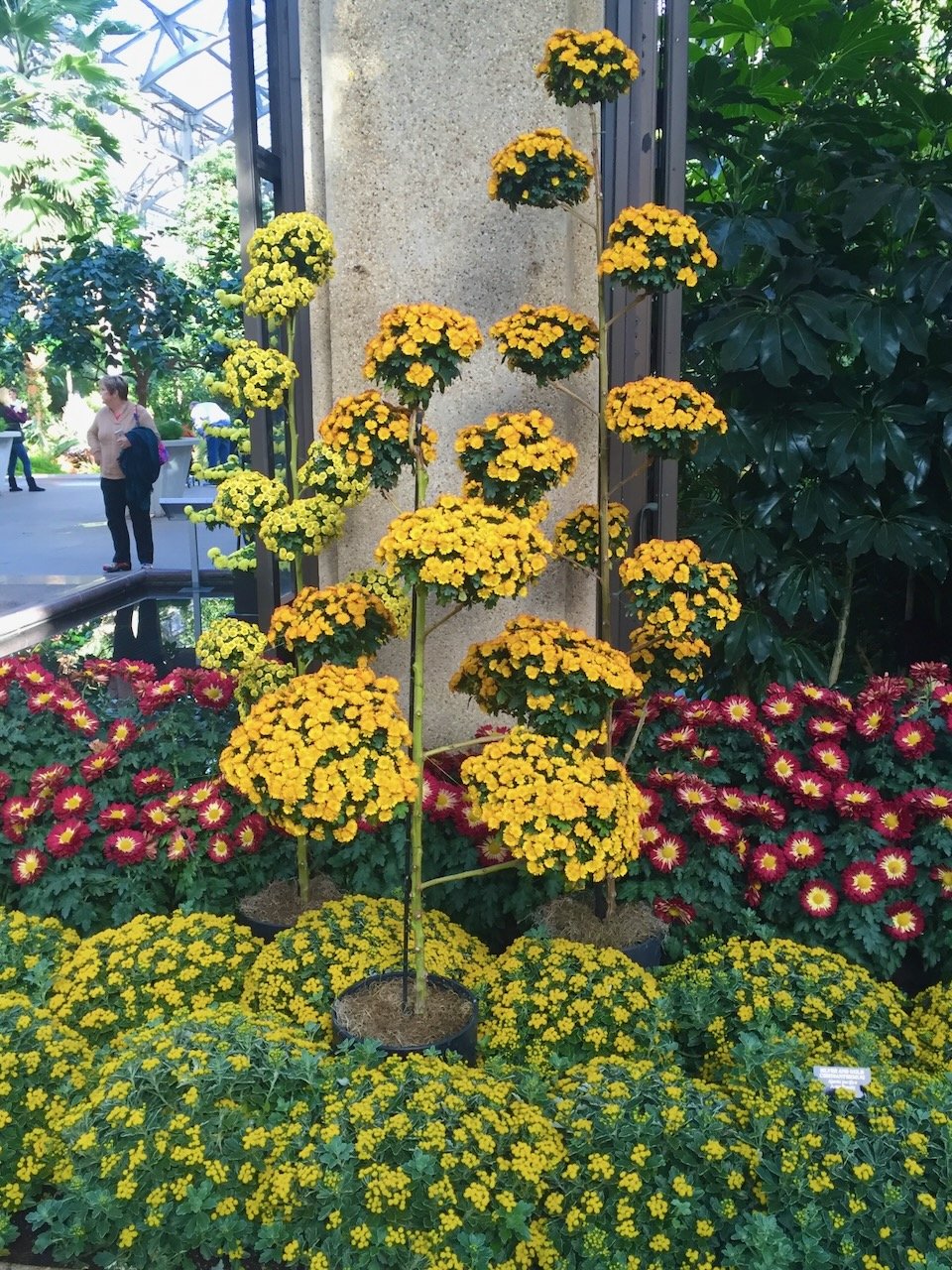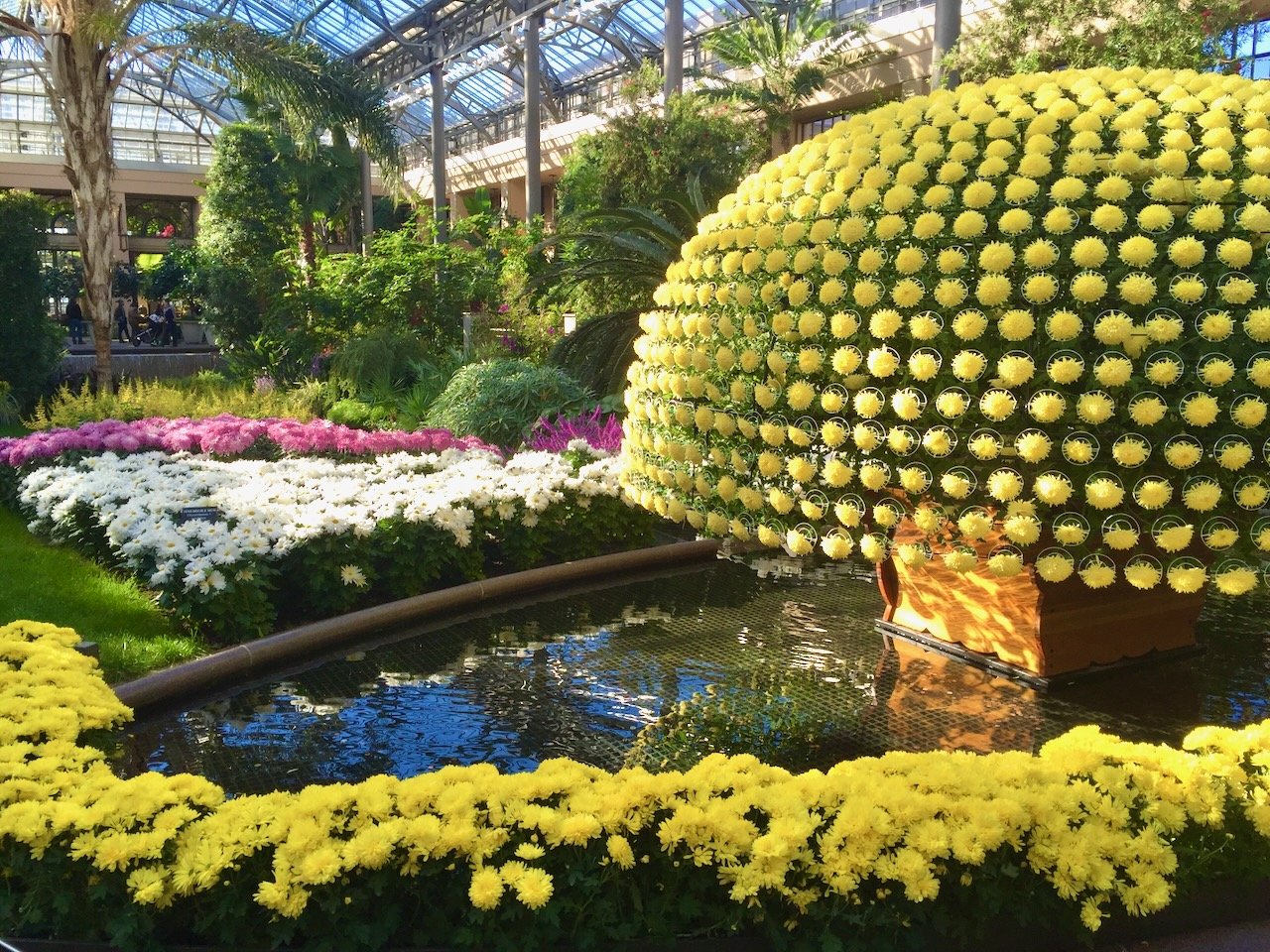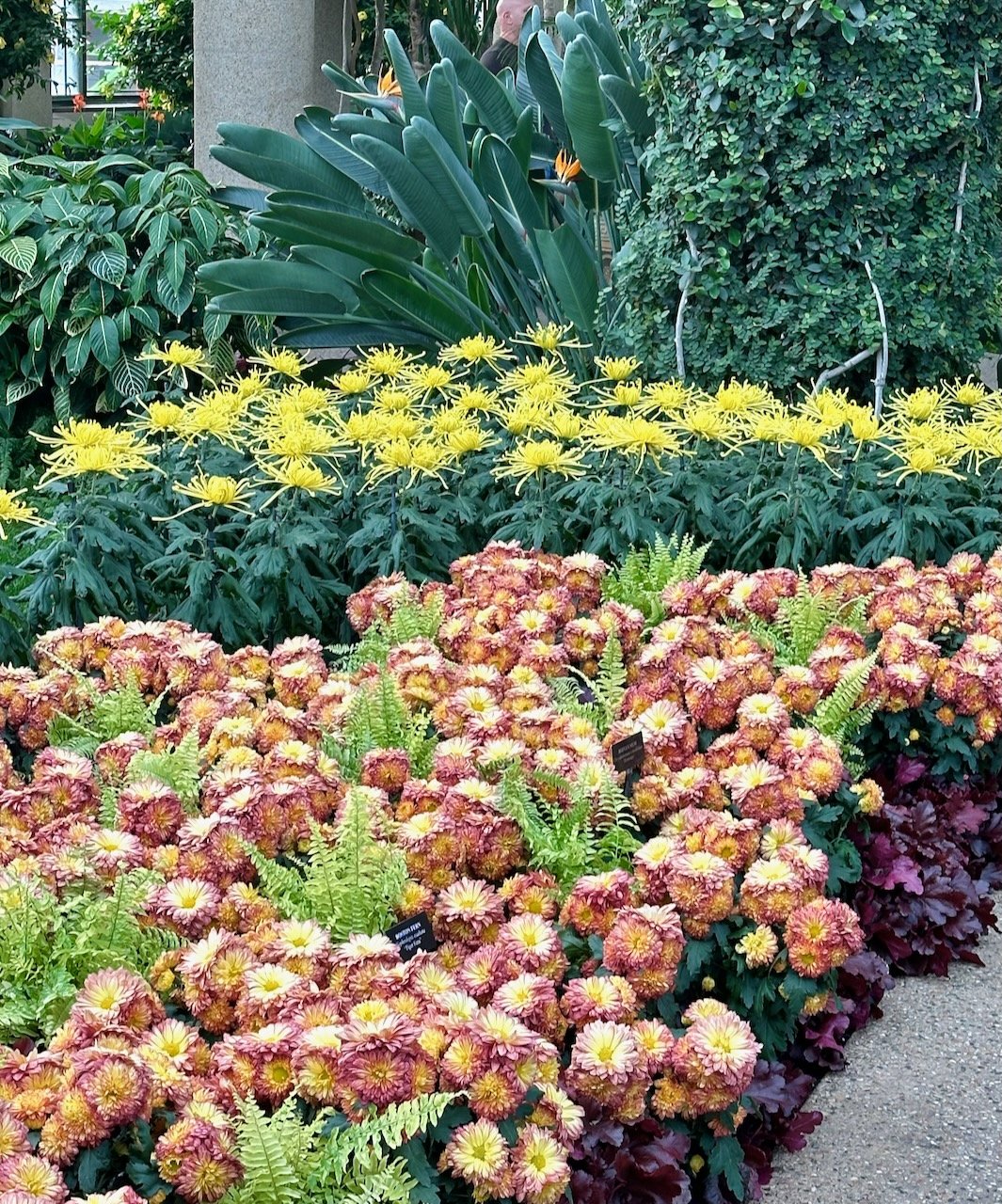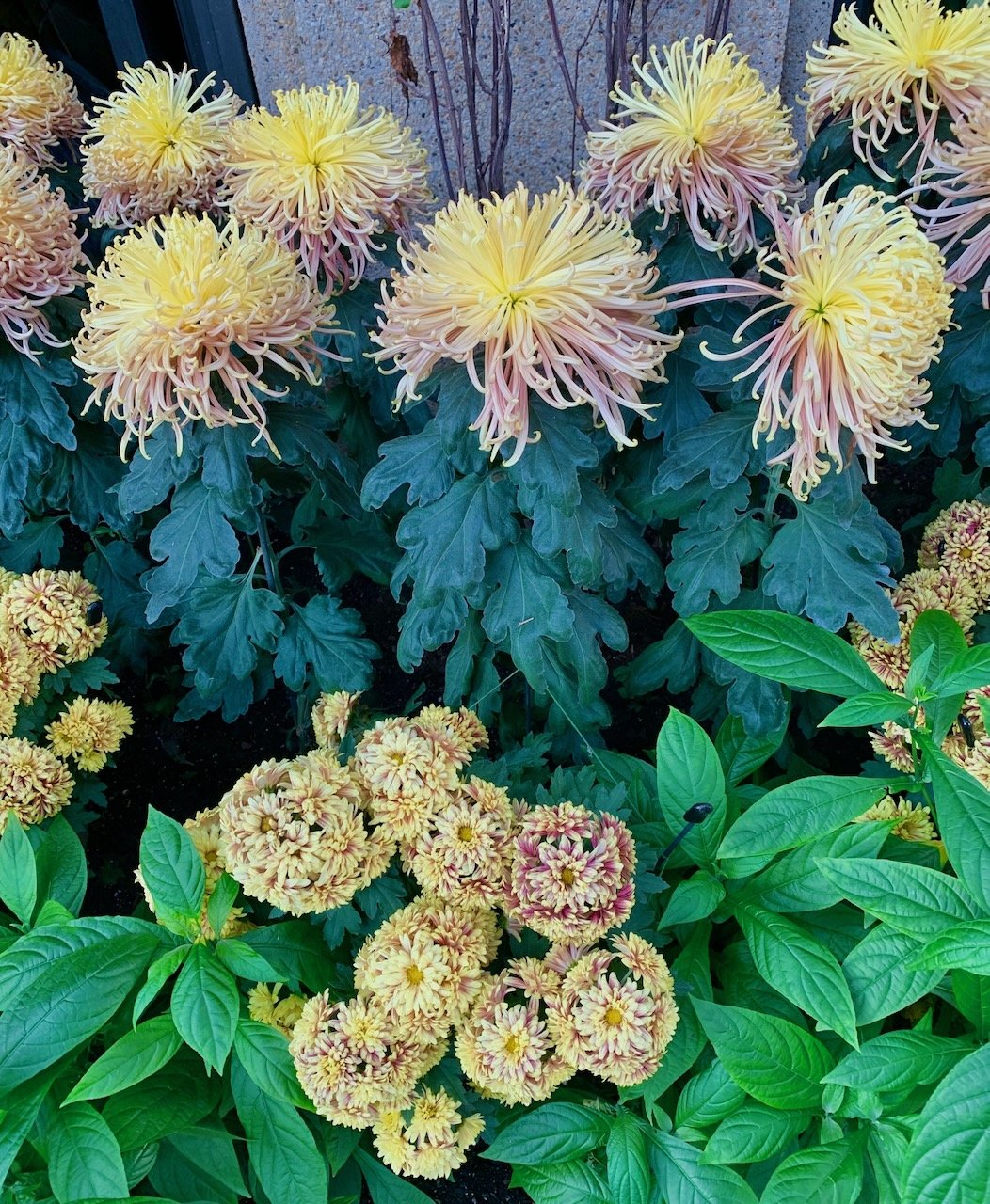Longwood’s Chrysanthemum Festival: Horticultural Artistry at its Finest
/As part of the Garden Bloggers Fling in September, our group of 100 garden writers were treated to a behind-the-scenes tour of the propagation greenhouses at Longwood Gardens. What a treat! I have been to Longwood Gardens many times in the past 10 years, and always wished to see the magic behind the beautiful displays.
Longwood’s annual Chrysanthemum Festival, held in October and early November, celebrates fall’s favorite flower in its many forms, hues, and varieties. During previous visits, I had marveled at the beautiful chrysanthemum displays, so was happy to see how they are created by Longwood’s designers and growers.
Chrysanthemum Festival is a distinct “season” in the Conservatory, when the Orangery, Exhibition Hall, and East Conservatory undergo a nearly complete transformations with an autumn color palette and thousands of mums. Preparations for the Festival begin more than a year in advance, when the designers finalize the appearance of the displays and choose the Chrysanthemum varieties that will be grown. The team is led by Jim Sutton, who has been at Longwood Gardens for more than 20 years. In addition to fall colors, Jim tries to incorporate Asian aesthetic touches since mums are native to Japan and China.
Photo: Longwood gardens
While most of us are familiar with the potted mums sold at nurseries and grocery stores, modern chrysanthemums are actually divided into 13 classifications based on their flower form. In the floral trade, the decorative, pompon, daisy, spider, and football mum are some of the more common types seen in floral arrangements. The Chrysanthemum Festival includes all of these varieties in amazing displays that require labor-intensive grafting techniques developed more than 400 years ago in Japan and China. To learn these techniques, Longwood’s growers traveled to Asia to train with specialty chrysanthemum growers who are skilled in this dying art form.
Jim considers the Chrysanthemum Festival to be the most horticulturally challenging exhibit presented each year. The special hybrids that are grown for the Festival are not the regular garden mums or hardy outdoor mums that we are all familiar with, and require a lot of attention. We met Jason who has been the Chrysanthemum grower for the past 20 years. With the assistance of 6 seasonal employees and 6 volunteers, he cultivates that hundreds of mums that amaze visitors each year.
The process begins more than a year in advance with cuttings from stock plants. Some cuttings are grafted on two different stocks—either on chrysanthemum stock or Artemisia (Artemisia annua) stock. Artemisia is used because it has strong root system for summer heat, disease and insect resistance. Others are grown on their own roots. Once rooted, these young plants are potted in mid- to late-summer, depending on when they are scheduled to bloom. From then on, plants are fertilized, pruned, pinched, trained, and grown under lights to create various forms that are needed for the displays. Some are trained to be “single stems,” so that side buds are continuously pinched off to produce one giant flower. Others are disbudded to produce plants with five medium-sized blooms. The mums that require the least amount of work are the spray-style mums, which are allowed to retain all of their buds.
Cascade chrysanthemums have long been at the heart of the Chrysanthemum Festival. Longwood grows specialty mums (Chrysanthemum x moriflorum) that originated in China and Japan and are selected for their ability to create beautiful and lasting forms. These amazing plants can grow six feet in a season, are extremely flexible, can be adapted to many shapes and forms, and produce an abundance of small anemone-type blooms. They are used in the three-dimensional pieces such as columns, globes, swags, and cones. We saw them trained into spirals, on v-shaped supports and obelisks, which have been fabricated by Longwood’s in-house welders. These mums are capable of being grown down a metal frame, and then removed from the frame, brought into the Conservatory and hung from their pots down the columns.
An interesting training method is stem-breaking, which is used for creating spirals and cascade curtains. This ultra-meticulous method requires nerves of steel, because it is easy to snap the plant in half. First, the pants are wilted, and then, using both hands, the stems are broken in multiple locations without rupturing the surface layers. The stems are then bent in the desired directions, wired to their frame and the plants are watered. Within hours the plants have mended with no lasting damage! Stem breaking is used throughout the entire vegetative growing season to create the incredible forms that you see on display.
A star feature of the Chrysanthemum Festival is the Thousand Bloom Chrysanthemum. This is always a show-stopper, and takes more than 1,800 labor hours of growing, pruning, pinching and training. The plant reaches a diameter of 12-1/2 feet, barely able to fit through the Main Conservatory’s doorway. We did not get to see this plant during our tour, but you can read more about its cultivation on Longwood’s blog.
The Chrysanthemum Festival is definitely worth a visit! This year, it runs from September 30–November 12. Visit longwoodgardens.org for more information.



